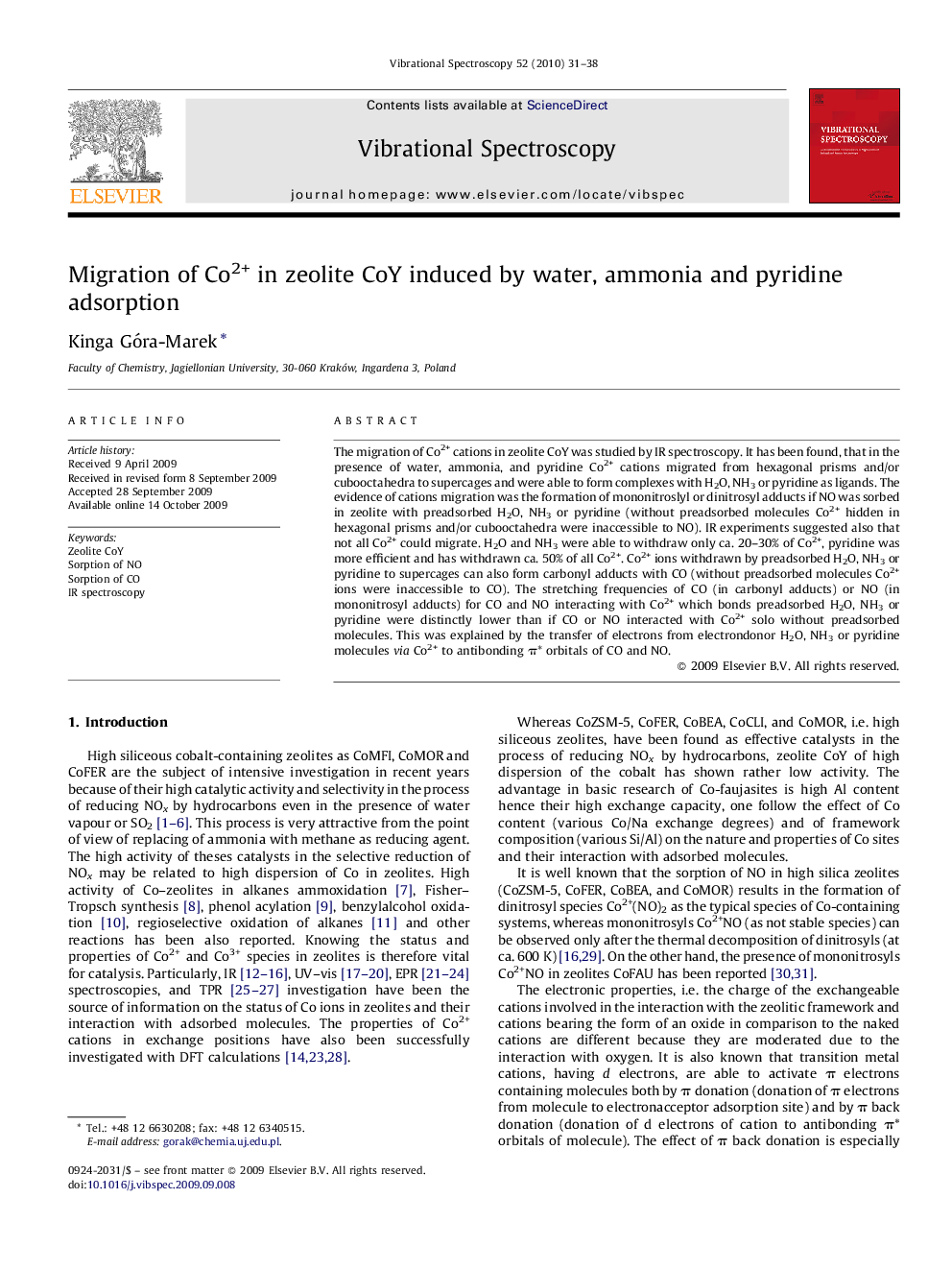| Article ID | Journal | Published Year | Pages | File Type |
|---|---|---|---|---|
| 1249695 | Vibrational Spectroscopy | 2010 | 8 Pages |
The migration of Co2+ cations in zeolite CoY was studied by IR spectroscopy. It has been found, that in the presence of water, ammonia, and pyridine Co2+ cations migrated from hexagonal prisms and/or cubooctahedra to supercages and were able to form complexes with H2O, NH3 or pyridine as ligands. The evidence of cations migration was the formation of mononitroslyl or dinitrosyl adducts if NO was sorbed in zeolite with preadsorbed H2O, NH3 or pyridine (without preadsorbed molecules Co2+ hidden in hexagonal prisms and/or cubooctahedra were inaccessible to NO). IR experiments suggested also that not all Co2+ could migrate. H2O and NH3 were able to withdraw only ca. 20–30% of Co2+, pyridine was more efficient and has withdrawn ca. 50% of all Co2+. Co2+ ions withdrawn by preadsorbed H2O, NH3 or pyridine to supercages can also form carbonyl adducts with CO (without preadsorbed molecules Co2+ ions were inaccessible to CO). The stretching frequencies of CO (in carbonyl adducts) or NO (in mononitrosyl adducts) for CO and NO interacting with Co2+ which bonds preadsorbed H2O, NH3 or pyridine were distinctly lower than if CO or NO interacted with Co2+ solo without preadsorbed molecules. This was explained by the transfer of electrons from electrondonor H2O, NH3 or pyridine molecules via Co2+ to antibonding π* orbitals of CO and NO.
